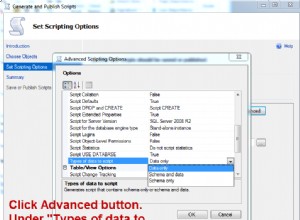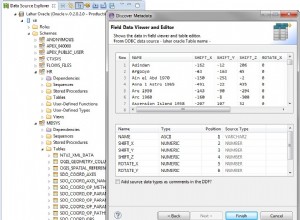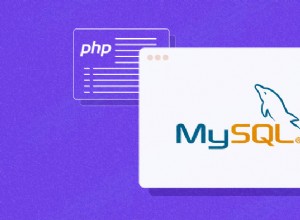SQL Server 2017 używa hashowania hasła SHA256 + szyfrowanie AES-256
Starsze wersje używają hashowania hasła SHA1 + szyfrowania 3DES-128
Rozmiar IV jest taki sam jak rozmiar bloku:AES =128 bitów, 3DES =64 bity
Tryb wypełniania:PKCS #7 Tryb szyfrowania:CBC
Dane zaszyfrowane przez serwer 2017 zaczynają się od „0x02”, starsze wersje zaczynają się od „0x01”.
// Example decrypt:
// UInt32 - "magic" (0xbaadf00d): 0d f0 ad ba
// UInt16 - unknown (always zero): 00 00
// UInt16 - decrypted data length (16): 10 00
// byte[] - decrypted data: 4c 65 74 54 68 65 53 75 6e 53 68 69 6e 69 6e 67
DecryptCombined("0x02000000266AD4F387FA9474E825B013B0232E73A398A5F72B79BC90D63BD1E45AE3AA5518828D187125BECC285D55FA7CAFED61", "Radames");
DecryptCombined("0x010000007854E155CEE338D5E34808BA95367D506B97C63FB5114DD4CE687FE457C1B5D5", "banana");
void DecryptCombined(string FromSql, string Password)
{
// Encode password as UTF16-LE
byte[] passwordBytes = Encoding.Unicode.GetBytes(Password);
// Remove leading "0x"
FromSql = FromSql.Substring(2);
int version = BitConverter.ToInt32(StringToByteArray(FromSql.Substring(0, 8)), 0);
byte[] encrypted = null;
HashAlgorithm hashAlgo = null;
SymmetricAlgorithm cryptoAlgo = null;
int keySize = (version == 1 ? 16 : 32);
if (version == 1)
{
hashAlgo = SHA1.Create();
cryptoAlgo = TripleDES.Create();
cryptoAlgo.IV = StringToByteArray(FromSql.Substring(8, 16));
encrypted = StringToByteArray(FromSql.Substring(24));
}
else if (version == 2)
{
hashAlgo = SHA256.Create();
cryptoAlgo = Aes.Create();
cryptoAlgo.IV = StringToByteArray(FromSql.Substring(8, 32));
encrypted = StringToByteArray(FromSql.Substring(40));
}
else
{
throw new Exception("Unsupported encryption");
}
cryptoAlgo.Padding = PaddingMode.PKCS7;
cryptoAlgo.Mode = CipherMode.CBC;
hashAlgo.TransformFinalBlock(passwordBytes, 0, passwordBytes.Length);
cryptoAlgo.Key = hashAlgo.Hash.Take(keySize).ToArray();
byte[] decrypted = cryptoAlgo.CreateDecryptor().TransformFinalBlock(encrypted, 0, encrypted.Length);
int decryptLength = BitConverter.ToInt16(decrypted, 6);
UInt32 magic = BitConverter.ToUInt32(decrypted, 0);
if (magic != 0xbaadf00d)
{
throw new Exception("Decrypt failed");
}
byte[] decryptedData = decrypted.Skip(8).ToArray();
bool isUtf16 = (Array.IndexOf(decryptedData, (byte)0) != -1);
string decryptText = (isUtf16 ? Encoding.Unicode.GetString(decryptedData) : Encoding.UTF8.GetString(decryptedData));
Console.WriteLine("Result: {0}", decryptText);
}
// Method taken from https://stackoverflow.com/questions/321370/how-can-i-convert-a-hex-string-to-a-byte-array?answertab=votes#tab-top
public static byte[] StringToByteArray(string hex)
{
return Enumerable.Range(0, hex.Length)
.Where(x => x % 2 == 0)
.Select(x => Convert.ToByte(hex.Substring(x, 2), 16))
.ToArray();
}




